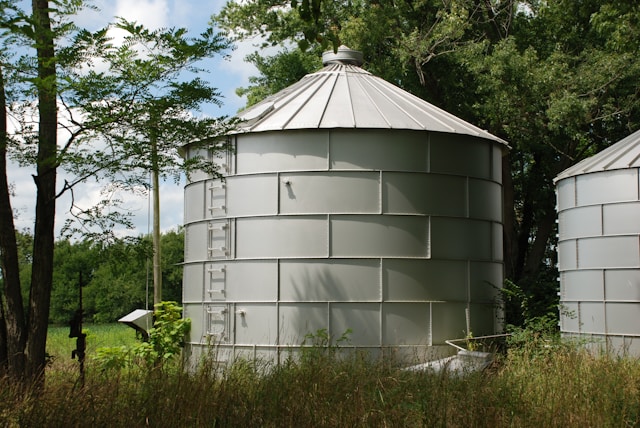Installing a septic tank is one of the biggest expenses homeowners face when building or upgrading a property that isn’t connected to a municipal sewer system. But how much does it actually cost to install a septic tank in 2025 and what factors make the price go up or down? Let’s explore detailed cost estimates, expert insights, and comparisons of different systems so you can make a smart, long-term investment.
Average Cost to Install a Septic Tank (2025 Update)
As of 2025, the average cost to install a septic tank ranges between $4,500 and $12,000, depending on the size, type, and soil conditions. Smaller systems for one-bedroom homes can cost as little as $3,000, while larger or advanced systems (such as aerobic units) can exceed $20,000.
System Type |
Average Cost (2025) |
Best For |
|---|---|---|
Conventional (gravity-fed) |
$4,500 – $8,000 |
Rural homes with good drainage |
Chamber system |
$5,000 – $10,000 |
Clay or sandy soil |
Mound system |
$10,000 – $20,000 |
Shallow soil or high water table |
Aerobic system |
$12,000 – $25,000 |
Environmentally sensitive areas |
Pressure distribution system |
$7,000 – $15,000 |
Uneven terrain or poor drainage |
Expert Insight:
According to the National Onsite Wastewater Recycling Association (NOWRA), inflation, stricter environmental codes, and rising material costs have driven up septic installation prices by 8–12% between 2023 and 2025.
What’s Included in the Septic Tank Installation Cost?
A complete installation involves more than just the tank itself. The total cost covers:
-
Site evaluation & soil test ($300–$1,200): Required by local health departments to determine system type and size.
-
Permits & design fees ($400–$2,000): Costs vary by state or county.
-
Excavation & labor ($1,500–$4,000): Based on soil type, depth, and accessibility.
-
Tank materials ($1,000–$3,000): Concrete, plastic, or fiberglass tanks vary in durability and price.
-
Drain field installation ($2,000–$6,000): Crucial for wastewater absorption and filtration.
Cost Comparison: Concrete vs. Plastic vs. Fiberglass Tanks
Tank Material |
Average Cost |
Pros |
Cons |
|---|---|---|---|
Concrete |
$1,200–$2,500 |
Long-lasting (40+ years), strong |
Heavy, may crack over time |
Plastic (Polyethylene) |
$800–$1,600 |
Lightweight, easy to install |
Can float if groundwater is high |
Fiberglass |
$1,200–$2,000 |
Resistant to corrosion and cracking |
More expensive than plastic |
Expert Note:
For homeowners in flood-prone or wet soil areas, fiberglass tanks are often recommended due to their resistance to water infiltration and minimal maintenance needs.
Regional Cost Variations
Septic system installation costs vary significantly by location due to soil composition, labor rates, and local codes.
Region |
Average Cost (2025) |
Notes |
|---|---|---|
Northeast (e.g., New York, Maine) |
$6,500 – $15,000 |
Rocky soil and strict permitting |
Midwest (e.g., Ohio, Michigan) |
$4,000 – $10,000 |
Moderate costs, easier soil conditions |
South (e.g., Texas, Florida) |
$3,800 – $9,000 |
Lower labor costs, sandy soil |
West Coast (e.g., California, Oregon) |
$7,000 – $18,000 |
High labor rates and environmental regulations |
Factors That Affect Septic Tank Installation Costs
-
Soil Type: Sandy soils drain faster (cheaper install), while clay or rocky soils need special systems.
-
Tank Size: Larger families require tanks of 1,000–2,500 gallons.
-
Water Table Level: High water tables need mound or aerobic systems.
-
Accessibility: Remote areas or narrow driveways increase excavation costs.
-
System Type: Advanced systems with pumps or oxygenators cost more but are eco-friendly.
Replacement vs. New Installation: Which Is Cheaper?
Replacing an existing septic tank is typically 20–30% cheaper than a new installation because parts of the system (like the drain field or pipes) may be reused.
Project Type |
Average Cost |
|---|---|
New Installation |
$7,500 – $12,000 |
Replacement Only |
$4,000 – $8,000 |
Expert Tip:
If your septic system is over 25 years old or showing signs of failure (slow drains, foul odors, pooling water), replacement may save you money in the long run versus constant repairs.
People Also Ask
1. How long does a septic tank last?
Concrete tanks last 40 years or more with proper maintenance. Plastic and fiberglass tanks can last 30–40 years.
2. Does homeowners insurance cover septic system replacement?
Typically no, most policies exclude wear and tear. However, damage from accidents or natural disasters may be partially covered.
3. What’s the cheapest septic system option?
A gravity-fed system is the most affordable option, costing $4,000–$8,000.
4. Can I install a septic tank myself?
DIY installation isn’t recommended due to local health regulations and potential penalties. Always hire a licensed septic contractor.
Visual Content Ideas
-
Infographic: “Septic System Cost Breakdown: What You’re Really Paying For”
-
Chart: “Concrete vs. Plastic vs. Fiberglass – Lifespan & Maintenance Comparison”
-
Map Visualization: “Average Septic Tank Costs by U.S. Region (2025)”
Final Thoughts
The cost to install a septic tank in 2025 depends on multiple factors system type, tank material, local soil conditions, and regional labor rates. While a basic setup might start at $4,000, investing in a high-quality or environmentally advanced system ensures long-term reliability and fewer repairs.









